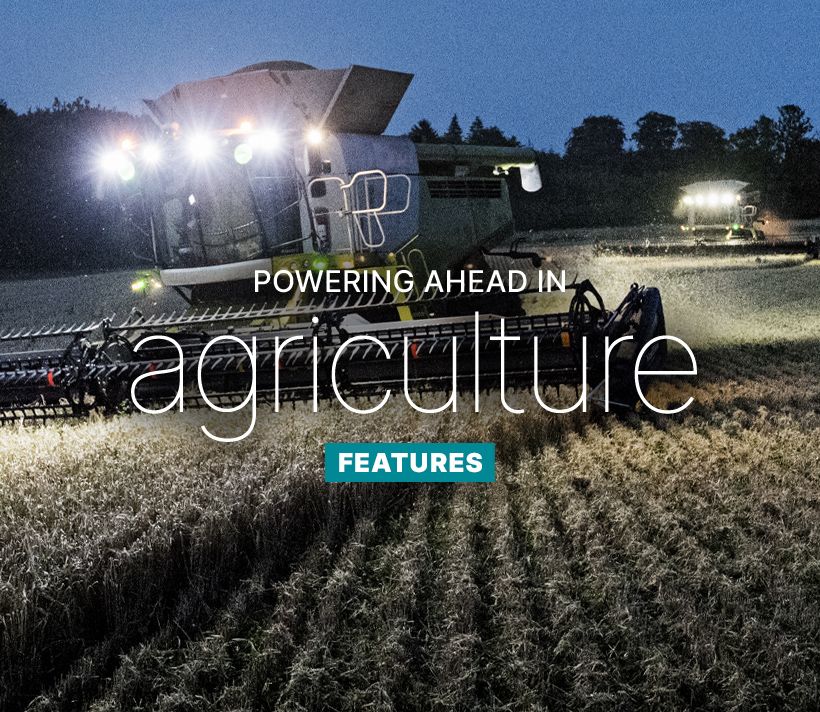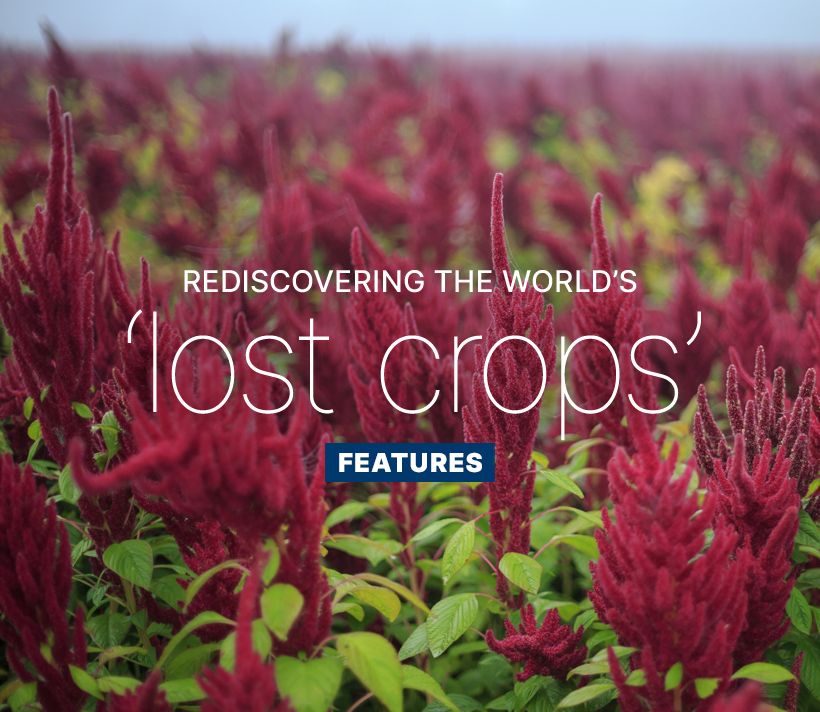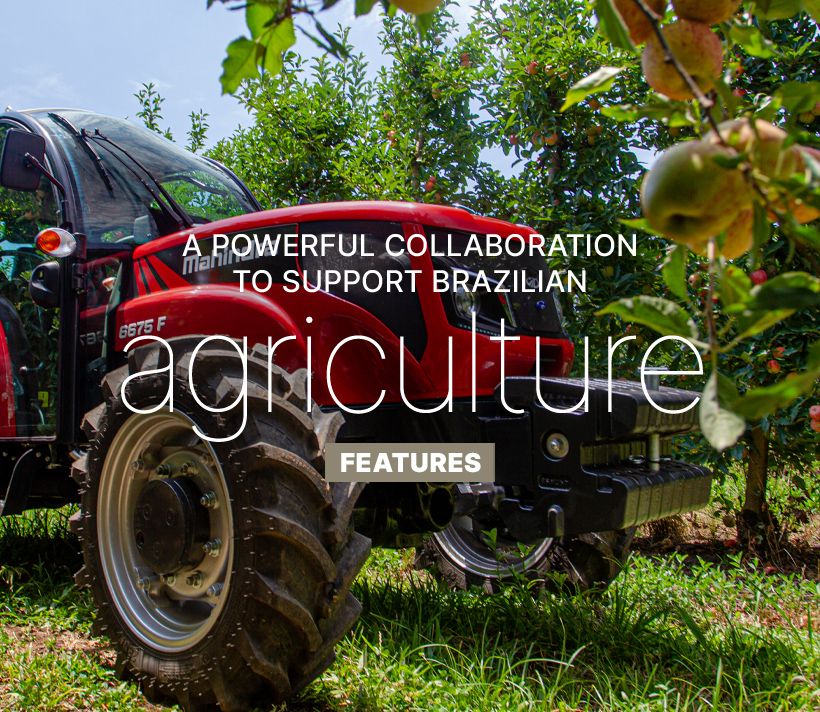Given Canada’s vast area – its ten million square kiIometres rank it the world’s second-largest country – it’s perhaps unsurprising that Canada’s a major agricultural producer.
More worthy of a raised eyebrow is that despite its massive land area and top-five ranking as an agricultural export giant, the country’s farmers achieve this level of output by using just 6.2 percent of its land area for production. After all, its closest neighbour, the United States, devotes more than two-thirds of its land to agriculture.
There’s no doubt, too, that agriculture’s a significant industry for Canada: employing around 2.3 million people, it accounts for one in nine Canadian jobs and contributes approximately 7 percent to Canada’s GDP, against a G7 average of less than 2 percent.
So what makes Canadian agriculture so special? Well, while size is undoubtedly important, much of the answer lies in what that size allows them to do. With average farm size of almost 330 ha, Canadian farmers can be hugely efficient, especially in commodity products such as grains and oilseeds, red meat and dairy products.
Annual growth over the last ten years averaged nearly 6 percent – driven by grain and oilseed receipts – and the country’s very largest farms, the top 10 percent, generate more than two-thirds of all agricultural revenues. Around half of the country’s production is exported.
One of Canada’s most valuable crops is canola. Grown by more than 43,000 farmers, primarily across the western provinces of Alberta, Saskatchewan and Manitoba, the crop’s been an amazing success story. In just a few decades, canola – known as oilseed rape in other parts of the world – has become one of the world’s most important commodity oilseeds: used for cooking oil, animal feed, and now sustainable fuels too. Canada’s now the world’s leading canola producer, growing more than 18 million tonnes, valued at CAD$14.4bn, for export to over 50 countries.
But even canola, which Canada has successfully made its own, can’t eclipse the importance of Canadian wheat: Canada’s largest field crop. Canada exports to more than 80 countries, generating CAD$42.7bn for the Canadian economy.
But it’s not just field crops that feature in Canadian agriculture; livestock production is important too. Dairy production is concentrated in the east, between Ontario and Quebec; a tightly controlled industry ensures that while domestic production is healthy, the country remains a net importer of dairy product. So it’s in the west, with its vast open prairies, that Canadian cattle production comes into its own: the perfect location for beef. There are more than 28 million ha of native rangelands in western Canada; the region finishes more than three-quarters of all fed cattle across the country. In total, beef production contributes CAD$22bn to Canadian GDP, with nearly half its production exported to countries such as the United States, China and Japan.
A vibrant industry, certainly. But as with every major food-producing country, its farmers face challenges and pressures: rising input costs, consumer expectations, and climate change, to name but three. There are some dark clouds on the horizon.
Climate change might be the greatest challenge. Not just because farmers are having to face up to its realities already, but that they come from two different directions.
The drought borne by the country in 2021 saw crop production take a nosedive. Authorities classified 74 percent of agricultural land nationally as ‘Abnormally Dry to Exceptional Drought’, with that figure rising to 99 percent in the prairies. Wheat production fell 38.5 percent and canola was down by 35.4 percent; lack of feed and rising prices saw farmers having to sell off 20 percent of their cattle herds to keep those remaining fed. Scientists at the University of Saskatchewan attributed the high temperatures and lack of rainfall squarely to climate change; its scale and depth was said to be the worst in the last 1,200 years.
Yet despite the supposedly ‘exceptional’ nature of 2021’s events, 2023 isn’t looking good either. At the end of June, when the Congress took place, Agriculture Canada’s drought map showed that most of the country was again ‘abnormally dry’: large expanses of prairie were in moderate drought, while parts of southern Alberta were pushing into extreme drought. On top of that, unprecedented heat – 372 new hot-temperature records have been recorded by Environment Canada – has made 2023 the worst wildfire season in North American history.
In common with most of the developed world, the Canadian government is trying to enact measures to reduce greenhouse gas emissions. In agriculture, that’s being addressed through the Canadian Sustainable Agriculture Strategy – a plan that tries to maintain and support the prosperity of the country’s agriculture, while recognising the need for clean water, clean air, healthy soil and healthy people.
For instance, direct emissions from applications of synthetic nitrogen fertiliser have risen by about 60 percent since 2005; the current plan is to encourage farmers to adopt new and better methods of nitrogen management to reduce these emissions by 30 percent by 2030. Farmers are also being asked to realise their land’s potential to increase carbon sequestration, adoption of regenerative practices being one such initiative.
Of course, it will come as no surprise that this vast country, with its above average farm size, also has a healthy demand for farm machinery. Canada was the world’s third-largest importer of tractors in 2021 and, as seen in other markets, farmers are continuing to prioritise machinery purchases to take advantage of new technologies to improve productivity and profitability. Among the expected ‘winners’ for 2023 are combines (projected sales to jump nearly 20 percent), four-wheel drive tractors (up 13.9 percent) and domestically produced implement sales – expected to rise by nearly a third, largely due to recoveries in supply chains.
It's always fascinating to use these Congresses to gain an accurate and up to date ‘snapshot’ of a country’s agricultural industry. No two countries are ever identical in how they manage agriculture, how they support it, what they grow and, not least, how their farmers farm what they farm. But without those differences, agriculture wouldn’t be the fascinating but essential global industry it is today. It’s no exaggeration to say that wherever IFAJ’s network of journalists work, they’re reporting on the most important job in the world.
Perkins’ collaboration with Trackunit, delivering real-time insights to customers, increasing productivity in the field.
Read moreFor industrial equipment rental, excellent technical support and parts availability is a necessity.
Read moreTo mark Agritechnica's 'Celebrate Farming Day', Powernews spoke to Andy Curtis, Customer Solutions Director at Perkins.
Read moreClever configuration options fulfil the current and future requirements of the industry.
Read moreWho keeps the lights on when the grid can’t? The power generation sector, of course. In the UK, its interests are represented by The Association of Manufacturers and suppliers of Power generating Systems (AMPS) – whose new director general, Alan Beech, came into post earlier this year.
Learn MoreHave you ever looked at the name of a Perkins engine and wondered what all those numbers and letters actually mean? If so, you’re certainly not alone. But rest assured the nomenclature is anything but random.
Read moreOne alternative fuel option we’ve researched heavily and have accommodated in our diesel engines for more than a decade is hydrotreated vegetable oil (HVO) – which must meet the EN 5940 standard – with the Perkins® 400 to 5000 Series able to use up to 100% HVO.
Read moreIn part two of our spotlight on marine we talk with Ben Lewis commercial manager, Dave Wood, application and tech support team lead and Stuart Phillipson, marine application and tech support to find out more about what’s in development for the marine range.
Read moreWhy stick to one fuel, when you can have a configurable power system?
Read moreMore than just a curiosity, they offer us different routes to future food security.
Read moreAdding to the product range with an 18-litre engine.
Read moreBy re-examining, reimagining, and re-engineering what is expected.
Read moreA clear demonstration of what's possible when a passion for innovation meets a commitment to excellence.
Read more














